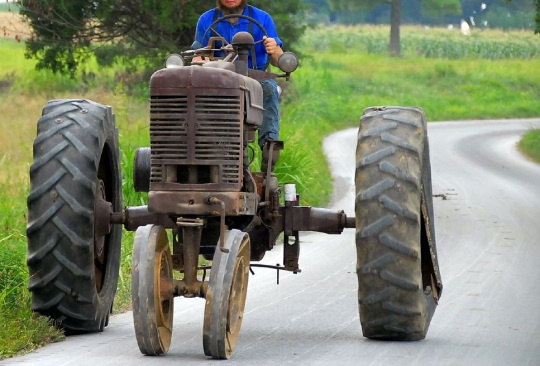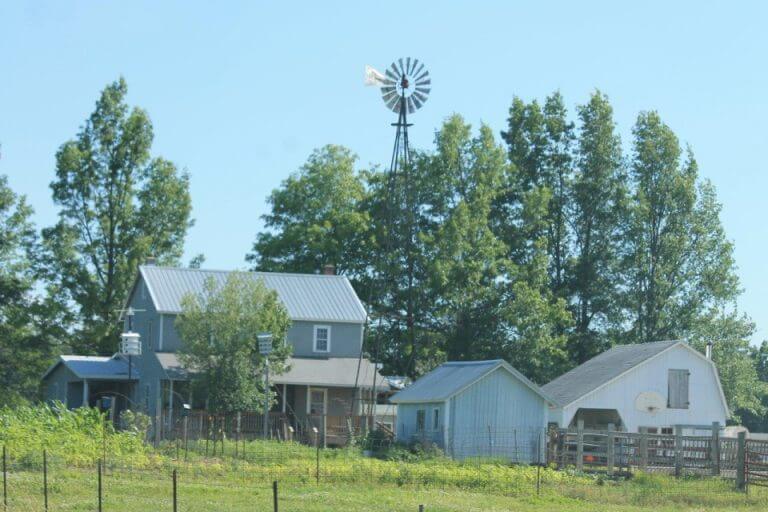Why do Amish restrict tractor use?
Spring is here, and that means plowing and planting time.
Most Amish do not use tractors in the field. Some will keep a tractor for around-the-barn tasks, such as filling the silo.
Why do the Amish limit tractors?

‘When tractors were first introduced on American farms, the Amish rejected them with the comments, “They don’t make manure” and “They ruin the land.”‘

‘Tractors, Amish farmers say, compact the land, which results in reduced yields. Amish farmers who have bought land from the non-Amish have noted that the soil begins to work easier after the third year.’

No Mules in the Midwest?
‘Horse power’ may refer to actual horses, or to mules, which are especially popular among the Lancaster Amish.
A Holmes County, Ohio acquaintance mentioned that he had heard of one or two that were starting to use mules in his area. But generally most Midwestern Amish stick with the big draft horses, the mighty Belgians and Percherons.

But it looks like there’s a deeper reason for the ‘mule taboo’ in the Buckeye state:
‘In Ohio, raising mules was forbidden by an Amish Ministers’ Conference in 1865 on the grounds that it was “improper to mix the creatures of God such as a horse and donkey by which mules arise, because the Lord God did not create such in the beginning.”‘
I wonder if Ohio Amish still feel the same way about mixing species, and particularly the dog breeders–ever hear of a ‘puggle’ or a ‘labradoodle’?




Is another reason the fact that with tractors, the people don’t need each other so much — that farming becomes more of a solitary activity and less of a group activity?
I drove PA Rt. 208 through New Wilmington enroute to Youngstown OH on Sunday afternoon and noticed many of the fields were freshly plowed.
PA 208 is available in “Street View” on Google maps. The Amish settlement runs from Volant to the east of New Wilmington and to Pulaski to the west. On Google maps type in New Wilmington PA and you will find Rt. 208. Zoom in at the Intersection of 208 and Mercer Rd. and turn the image and you will find an Amish schoolhouse. Travel west in street view and past this same intersection you will come upon two men in an open buggy on their way to work. 360’s east and west of New Wilmington will give you views of Amish farms, barns, homes and out buildings. A few more buggies are on the road elsewhere. The light blue doors tell you you’re in Amish country. The only Amish settlement in America available in “Street View”, pretty cool!
I know, I need to find better ways to waste my time. 🙂
Hi. I don’t mean to sound like a know-it-all but while donkeys(equus asinus) are different species from horses (equus ferus), all dog breeds are of the same species (canis familiaris). That’s why mules are sterile and labradoodles aren’t. Zonkies — crosses between horses and the zebra species (equus zebra, equus quagga or equus grevyi) would also be sterile.
The first word in those funny word pairs is the name of the genus the animal belongs to and the last name is the species. The equus species above are closely enough related to have babies, but those babies are sterile. That’s a sign of them being different species and maybe that’s what the Amish farmers who forbade using mules were noticing…
Okay. End of geek mode, now. 😀
Amish do drive tractors
Wile on holiday with my son on a fly drive holiday, we drove through Amish country and saw lots of Amish ploughing fields with tractors